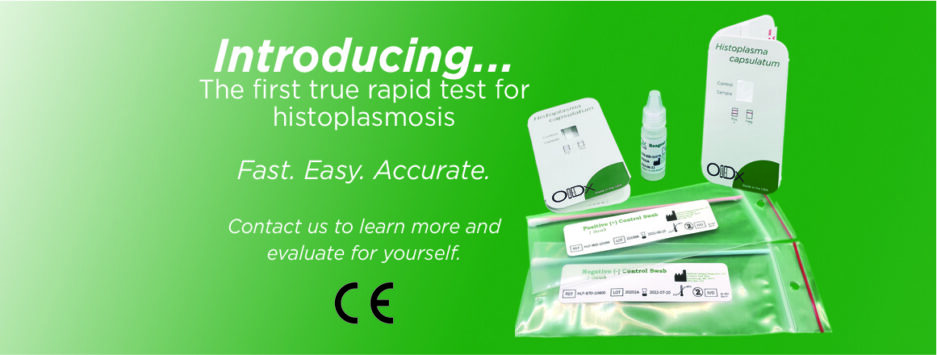ELISA
Other ELISAs include extra steps and washes, and require more time to result. With only an hour wait after sample addition, the user of the OIDx Histoplasmosis ELISA need only complete three major steps:
- Add sample and conjugate (simultaneous assay)
- Add color developer
- Measure
By working in tandem with the complex biological technology that makes up life, OIDx can detect histoplasmosis antigen in a patient’s urine. Here’s how it works:
- We attach a known quantity of capture antibody to an ELISA plate. ELISA plates are usually made up of 96 wells, each well a test. The antibody binds to the inside of the well.
- We then block any spots on the inside of the well that antibody has not bound to. This protects the antibody and finishes the ELISA plate production.
- The user then applies sample and conjugate to an ELISA well. Conjugate is the same capture antibody from before but this is also bound to a larger protein. If histoplasmosis antigen is present, the antigen will bind to the antibody bound to the ELISA plate. The conjugate then binds to the antigen too, and forms a sandwich (of capture antibody-antigen-conjugate). This ELISA technique is called Sandwich ELISA .
- The plate is washed to remove any unbound conjugate and shaken for one hour.
- A chemical is added that reacts with the larger protein component of the conjugate to produce a blue color.
- Results: the light absorbance of the well is then measured. The more blue, the more antigen is present.
How does an ELISA work?
Proteins, antibodies, peptides, and hormones are small. How can we detect them in the body, especially when so many other biological components are present too? One such method is Enzyme-Linked ImmunoSorbent Assay, or ELISA. ELISA is a common high-throughput immunoassay technique which specifically binds to the one thing you are trying to detect, often antibodies.
What are antibodies?
Antibodies are Y-shaped proteins produced by the immune system in response to a foreign substance, called an antigen. Antibodies recognize and latch onto antigens in order to remove them from the body.

